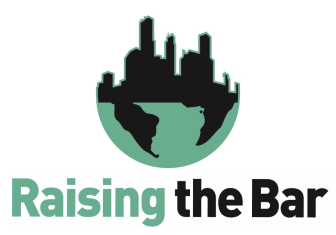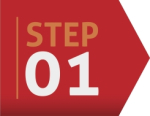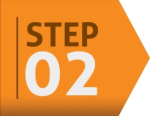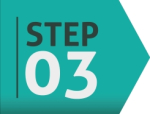 As you may remember, in an earlier post entitled “Investor Protection Issue - Why You May Want To Reconsider How “Secure” You Feel About Your Real Estate Crowdfunding Investment,” I took issue with the fact that the majority, if not all, currently offered Real Estate Crowdfunding (i.e. RECfunding) investments are completely unsecured from the investor standpoint. This has never sit well with Patch Of Land (see “Patch Of Land Addresses Growing Industry Concerns“) and they recently released the details of a new investment structure which takes a huge step forward in correcting this issue.
As you may remember, in an earlier post entitled “Investor Protection Issue - Why You May Want To Reconsider How “Secure” You Feel About Your Real Estate Crowdfunding Investment,” I took issue with the fact that the majority, if not all, currently offered Real Estate Crowdfunding (i.e. RECfunding) investments are completely unsecured from the investor standpoint. This has never sit well with Patch Of Land (see “Patch Of Land Addresses Growing Industry Concerns“) and they recently released the details of a new investment structure which takes a huge step forward in correcting this issue.
Before I continue I feel it should be noted that, while I did not draft the new offering documents personally, Patch of Land is a client of mine and I have had multiple conversations with Amy Wan, Patch of Land’s General Counsel, regarding the structure during its drafting. While that technically makes me somewhat biased, this post is intended to be a completely impartial description of Patch of Land’s new offering structure and its benefits over other current offerings. Moreover, as Amy herself would tell you, I am certainly not afraid to speak my mind and question her on the merits of a proposed structure, so if I though there was an issue I would point it out. Now, with that out of the way, on to a description of the new structure.
For those that don’t truly understand the mechanics of RECfunding debt (not equity) investments, a brief explanation is in order. As an investor it may seem like you are lending directly to the real estate developer (i.e. the borrower) but in fact you are almost always lending to an intermediate entity (“Loan 1”) who then lends that money (or in the case of portals that prefund, has already lent money) to the real estate developer (“Loan 2”). In return for their money an investor will receive what is referred to as a Borrower Payment Dependent Notes (“BPDNs”). A BPDN simply means the investor gets paid if/when the intermediary gets paid by the real estate developer.

There are multiple legal and administrative reasons why using such an intermediary entity is a preferable structure but they are beyond the scope of this article so let’s just assume for the sake of argument that it has to be this way. The issue with current RECfunding structures is that, while the loan from the intermediate entity (i.e. Loan 2) is fully secured by a mortgage on the underlying property, the loan from the investor (i.e. Loan 1), and the BDPN received by the investor, are completely unsecured (for a detailed description of this issue see “Investor Protection Issue - Why You May Want To Reconsider How “Secure” You Feel About Your Real Estate Crowdfunding Investment”). Put simply, Patch Of Land’s new proposed offering structure is intended to correct this security imbalance and allow investor loans, and the BDPNs received by the investors, to be secured by a shared interest in the underlying property.
This is how Patch Of Land’s new structure generally works:
 Patch of Land funds a loan to a real estate developer (“Borrower”). In return Borrower gives Patch of Land a Promissory Note (the “POL Note”) and, as security for the repayment of the POL Note, a Mortgage on the subject property.
Patch of Land funds a loan to a real estate developer (“Borrower”). In return Borrower gives Patch of Land a Promissory Note (the “POL Note”) and, as security for the repayment of the POL Note, a Mortgage on the subject property.
 Patch of Land assigns all of its interest in the POL Note and the securing Mortgage to a special purpose, bankruptcy remote, Patch of Land intermediary entity (the “POL Intermediary”).
Patch of Land assigns all of its interest in the POL Note and the securing Mortgage to a special purpose, bankruptcy remote, Patch of Land intermediary entity (the “POL Intermediary”).
 The POL Intermediary then offers a loan to investors (the “Investor Loan”). In return for their investment, each investor would receive a BDPN made by the POL Intermediary (the “Investor Note”). It should be noted that the investor will actually receive an electronic copy of the Investor Note with the original being held by the Trustee (defined below).
The POL Intermediary then offers a loan to investors (the “Investor Loan”). In return for their investment, each investor would receive a BDPN made by the POL Intermediary (the “Investor Note”). It should be noted that the investor will actually receive an electronic copy of the Investor Note with the original being held by the Trustee (defined below).
 Simultaneously with the making of the Investor Loan, the POL Intermediary will assign all of its interest in the POL Note and securing Mortgage to an independent third-party “indenture trustee” (the “Trustee”) pursuant to an indenture agreement. The Trustee is tasked with holding the interest in the POL Note and securing Mortgage strictly for the benefit of the holders of the Investor Notes. Specifically, per the indenture agreement, the Trustee will be responsible for enforcing the POL Note and securing Mortgage upon any default by the Borrower. It will then pass all collected proceeds (if any) directly to the holders of the Investor Notes. In addition, in the event that the POL Intermediary (or Patch of Land in general) ever files for bankruptcy, dissolves, etc. the Trustee would step in and facilitate the making of payments on the Investor Notes to investors.
Simultaneously with the making of the Investor Loan, the POL Intermediary will assign all of its interest in the POL Note and securing Mortgage to an independent third-party “indenture trustee” (the “Trustee”) pursuant to an indenture agreement. The Trustee is tasked with holding the interest in the POL Note and securing Mortgage strictly for the benefit of the holders of the Investor Notes. Specifically, per the indenture agreement, the Trustee will be responsible for enforcing the POL Note and securing Mortgage upon any default by the Borrower. It will then pass all collected proceeds (if any) directly to the holders of the Investor Notes. In addition, in the event that the POL Intermediary (or Patch of Land in general) ever files for bankruptcy, dissolves, etc. the Trustee would step in and facilitate the making of payments on the Investor Notes to investors.
While the steps may seem somewhat convoluted, the result is simple. Unlike other current offerings, investors making a loan through Patch of Land will receive a BDPN which is actually SECURED by a shared interest (i.e. with other investors) in the underlying property. While the investors themselves cannot go after borrower directly like a traditional lender can, the Trustee acts on behalf of all investors in overseeing and enforcing their security interests. This is a significant improvement in terms of making these loans less risky for investors. I mean which do you think is riskier: a completely unsecured loan or a loan secured (albeit it indirectly) by a mortgage on real estate?
making these loans less risky for investors. I mean which do you think is riskier: a completely unsecured loan or a loan secured (albeit it indirectly) by a mortgage on real estate?
The fact that Patch of Land has chosen to be completely transparent and share its form documentation with everyone illustrates its ongoing commitment to improving the investor experience and the industry as a whole, not just their bottom line. As Amy Wan put it:
“As a company, we place a heavy emphasis on doing good and doing right, and a large part of that involves listening to our clients, taking their comments and suggestions into account, and continually improving our product to make it the best on the market. Customer support isn’t just answering phones-it involves really listening and understanding our customers’ concerns.”
I can’t lie, being a lawyer I can tell you that when Amy came to me and asked me whether I had concerns about Patch of Land posting its form documentation online, my mind raced with all the reasons why she shouldn’t do it. First and foremost, by posting the form documents online (copies of which you can find HERE) you are basically giving critics an east target to shoot holes in your structure. Not to mention allowing competitors to easily copy the structure. Apparently however, that is EXACTLY what Amy and Patch of Land wants. Patch of Land is so committed to improving the industry that they actually WANT competitors to adopt a similar structure because it will improve the investor experience overall and lend further credibility to the industry. They also welcome and invite criticisms to their documentation as they continually seek to make it better.
 Is the structure perfect? No. As I said, the steps are somewhat convoluted and it honestly takes a lawyer to follow the steps outlined by the documentation. It is however a huge step in the right direction in terms of investor protection and I absolutely admire Patch of Land for being the pioneer in this effort. I am certain that other portals will follow Patch of Land’s lead and work to improve their own offering structures.
Is the structure perfect? No. As I said, the steps are somewhat convoluted and it honestly takes a lawyer to follow the steps outlined by the documentation. It is however a huge step in the right direction in terms of investor protection and I absolutely admire Patch of Land for being the pioneer in this effort. I am certain that other portals will follow Patch of Land’s lead and work to improve their own offering structures.
